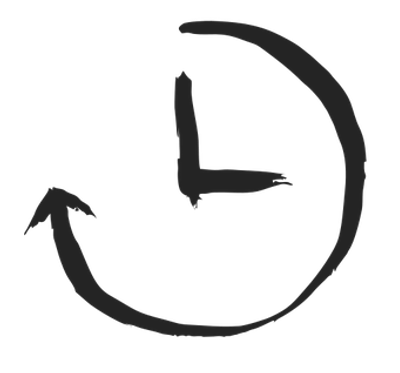- Home
- 7 Steps of Goal Setting
- What are Some SMART Goals (+10 examples)
What are some SMART Goals (Examples + a Handy Template)
Setting goals is a crucial part of achieving success. However, not all goals are created equal! You can use the SMART framework to ensure your goals are clear, attainable, and effective. In this article, we'll explore what are some SMART Goals with 10 concrete examples (in both personal and work domains), and also access to a handy goal-setting template.
By the end, you'll know exactly how to set SMART goals that enhance your productivity and work-life balance.
What Are Some SMART Goals Criteria?
Mark Twain once said, "The secret of getting ahead is getting started." With SMART goals, you are not just starting but setting a course that is clear and guided.
SMART is an acronym that stands for Specific, Measurable, Achievable, Relevant, and Time-bound. This framework helps you create goals that are clear and reachable, with a defined path to success.
|
S |
Specific. |
Your goal should be clear and specific, answering the questions of who, what, where, when, and why. Consider using action verbs to state your goal. |
|
M |
Measurable. |
Measurable goals allow you to track how you are going and review, reward, and re-calibrate. |
|
A |
Achievable. |
Your goal should be realistic and attainable, not impossible! Having clear action steps and milestones shows you the path to achieving your goals |
|
R |
Relevant. |
The goal should matter to you and align with other relevant goals. |
|
T |
Timely. |
Your goals should be time-bound so that they create a practical sense of urgency and give you a clear idea of what to achieve by when. |
To help you with setting smart goals, feel free to download our fillable PDF SMART Goal Template.
What are SMART Goals?
Well I think the best way to illustrate is with 10 common examples in the personal and the work domain. The examples include the following goals:
|
Personal Domain |
Work Domain |
|
1. Fitness Goals |
6. Project Management Goals |
|
2. Learning Goals |
7. Sales Goals |
|
3. Financial Goals |
8. Professional Development Goals |
|
4. Health Goals |
9. Team Goals |
|
5. Hobby Goals |
10. Productivity Goals |
What Are Smart Goals Examples (in the Personal Domain)
1. Fitness Goal Example: I want to get in shape
A common fitness goal that I hear is "I want to get in shape".
But this is not a SMART Goal because the goal is is vague and lacks specificity, measurability, achievability, relevance, and a time frame.
The consequence is that without a specific target, it's hard to measure progress or know when you've achieved your goal. This can lead to a lack of motivation and direction, making it easier to give up.
Transforming this into a SMART Goal
To transform this into a SMART goal, you could specify the following:
Fitness Goal: "I will run a 5KM in under 30 minutes by the end of June."
This is a SMART Goal example because it is:
- Specific: The goal clearly states the activity (running a 5KM ) and the target time (under 30 minutes).
- Measurable: Success can be measured by completing the race in the specified time.
- Achievable: With a consistent training plan, running a 5K in under 30 minutes is realistic for me given where I am at, at the moment.
- Relevant: This goal is relevant to improving my health and fitness, which is important for overall well-being.
- Time-bound: The deadline is set for the end of June, providing a clear timeframe for training and preparation.
2. Learning Goal Example: I want to learn something new
This learning goal of "I want to learn something new" is too broad. This makes it difficult to choose a specific course or subject. Without a clear plan, you may procrastinate or never start, leading to missed opportunities for skill development. You might also end up with superficial knowledge rather than in-depth understanding.
What are some SMART Goals for Learning
To transform this into a SMART goal, you could specify the following:
Learning Goal: "I will complete an online course in digital marketing within the next three months."

This is a SMART Goal example because it is:
- Specific: The goal specifies the type of course (digital marketing) and the mode of learning (online).
- Measurable: Completion of the course is a clear indicator of success.
- Achievable: Given the availability of online courses, the typical duration, and my own schedule; completing one in three months is feasible.
- Relevant: Enhancing digital marketing skills is relevant for career advancement in my area of work.
- Time-bound: The goal has a three-month deadline, creating a sense of urgency and focus.
3. Financial Goal Example: I want to save money.
This common financial goal of "I want to save money" does not specify the amount or deadline. As such, it's easier to spend money impulsively or save inconsistently. This can result in not having enough savings when you need it most, leaving you financially vulnerable in emergencies.
Transforming this into a SMART Goal
To transform this into a SMART goal, you could specify the following:
Financial Goal: I will save $5,000 for an emergency fund by the end of the year."

Why is this a SMART Goal Example?
- Specific: The goal specifies the amount to be saved ($5,000) and the purpose (emergency fund).
- Measurable: Progress can be tracked by monitoring the savings account balance.
- Achievable: With a monthly savings plan, setting aside a portion of income each month makes this goal attainable.
- Relevant: Building an emergency fund is crucial for financial security and my peace of mind.
- Time-bound: The goal has a clear deadline (end of the year), providing a timeframe for saving.
4. Health Goal Example: I want to lose weight.
The health goal of "I want to lose weight" is a very common goal, but it is a vague goal lacks a clear plan. This will make it hard to track progress or stay motivated. The consequence is that you might try ineffective methods or give up if you don't see immediate results, leading to frustration and potential weight gain instead of loss.
What are some SMART Goals for Health
To transform this into a SMART goal, you could specify the following:
Health Goal: "I will lose 10 pounds in the next six months by following a balanced diet and exercising three times a week."

Why is this a good SMART Goal Example?
- Specific: The goal specifies the amount of weight to lose (10 pounds) and the methods (diet and exercise).
- Measurable: Weight loss can be tracked using a scale and progress photos.
- Achievable: Losing 10 pounds in six months is realistic for me, with a balanced diet and regular exercise.
- Relevant: This goal is relevant to improving my overall health and fitness.
- Time-bound: The six-month timeframe provides a clear period for achieving the goal.
5. Hobby Goal Example: I want to learn to play an instrument.
The hobby goal of "I want to learn to play an instrument" does not specify the instrument or practice schedule, so it will be easy to lose focus or not practice regularly. This can lead to slow progress and frustration, making it less likely that you'll stick with the hobby.
Transforming this into a SMART Goal
To transform this into a SMART goal, you could specify the following:
Hobby Goal: "I will learn to play the guitar by practicing for 30 minutes every day for the next six months."

This is a SMART Goal example because it is:
- Specific: The goal specifies the activity (learning to play the guitar) and the practice duration (30 minutes daily).
- Measurable: Progress can be measured by the ability to play songs and improve skills.
- Achievable: Practicing daily for 30 minutes is a manageable commitment for me.
- Relevant: Learning a new skill or hobby can be fulfilling and enjoyable, and aligns with the broader well-being goals I have.
- Time-bound: The goal has a six-month deadline, providing a clear timeframe for learning.
What Are Smart Goals Examples (in the Work Domain)
6. Project Management Goal Example: I want to finish my project early.
The project management goal of "I want to finish my project early" is a vague goal that lacks a clear plan for how to achieve it. Without specific steps, the team may not know how to improve collaboration, leading to missed deadlines and lower quality work. This can also cause stress and burnout among team members.
What are some SMART Goals for this example
To transform this into a SMART goal, you could specify the following:
Project Management Goal: "I will complete the current project two weeks ahead of schedule by improving team collaboration and efficiency."

Why is this a good business SMART Goal Example?
- Specific: The goal specifies the project and the desired outcome (completing it two weeks early).
- Measurable: Success can be measured by the project completion date.
- Achievable: With improved collaboration and efficiency, completing the project early is feasible.
- Relevant: This goal is relevant to enhancing team productivity and meeting deadlines.
- Time-bound: The goal has a specific timeframe (two weeks ahead of schedule).
7. Sales Goal Example: I want to increase my sales.
The sales goal of "I want to increase my sales" does not have a specific target or strategy. This increases the difficulty of measuring progress or knowing if you're on track. This can result in missed sales opportunities and lower revenue, as well as a lack of focus on the most effective sales techniques.
What are some SMART Goals for this example
To transform this into a SMART goal, you could specify the following:
Sales Goal: "I will increase my sales by 20% in the next quarter by reaching out to 10 new prospects each week."

Why is this goal a SMART example?
- Specific: The goal specifies the desired increase in sales (20%) and the method (reaching out to new prospects).
- Measurable: Sales performance can be tracked and compared to previous quarters.
- Achievable: Reaching out to 10 new prospects each week is a realistic strategy for increasing sales.
- Relevant: Increasing sales is crucial for business growth and revenue.
- Time-bound: The goal has a clear deadline (next quarter).
8. Professional Development Goal Example: I want to network more.
The professional development goal of "I want to network more" is a vague goal that lacks a clear plan for how to network or which events to attend. Without specific actions, you may miss valuable networking opportunities and professional growth, leading to stagnation in your career.
What are some SMART Goals for this example
To transform this into a SMART goal, you could specify the following:
Professional Development Goal: "I will attend three industry conferences this year to expand my professional network and knowledge."

Why is this a SMART Goal Example?
- Specific: The goal specifies the number of conferences (three) and the purpose (networking and knowledge).
- Measurable: Attendance at the conferences can be tracked.
- Achievable: Attending three conferences in a year is feasible with proper planning.
- Relevant: Expanding professional networks and knowledge is important for career growth.
- Time-bound: The goal has a clear deadline (this year).
9. Team Goal Example: We want to improve customer support.
The team goal of "We want to improve customer support" has no specific metrics or a clear plan. This makes it difficult to measure improvement or know if you're meeting customer expectations. This can lead to continued customer dissatisfaction and lost business, as well as a lack of accountability within the team.
What is a SMART Goal for this example
To transform this into a SMART goal, you could specify the following:
Team Goal: "Our team will reduce customer support response time to under 24 hours within the next six months."

This is a SMART Goal example because it is:
- Specific: The goal specifies the desired response time (under 24 hours).
- Measurable: Response times can be tracked and measured.
- Achievable: With process improvements, reducing response time is feasible.
- Relevant: Improving customer support is crucial for customer satisfaction.
- Time-bound: The goal has a six-month deadline.
10. Productivity Goal Example: I want to be more productive.
This productivity goal of "I want to be more productive" is a vague goal that lacks a clear strategy for how to improve productivity. Without specific actions, you may continue to struggle with time management and task completion, leading to stress and burnout. You might also miss out on the benefits of using effective productivity tools.
What are some SMART Goals for this example
To transform this into a SMART goal, you could specify the following:
Productivity Goal: "I will improve my productivity by using a task management tool to organize my daily tasks and priorities for the next three months."

This is a SMART Goal example because it is:
- Specific: The goal specifies the use of a task management tool.
- Measurable: Productivity can be tracked by monitoring task completion.
- Achievable: Using a task management tool is a realistic strategy for improving productivity.
- Relevant: Enhancing productivity is important for work efficiency.
- Time-bound: The goal has a three-month deadline.
Conclusion
Setting SMART goals is a powerful way to ensure your objectives are clear, attainable, and aligned with your broader aspirations. By following the SMART framework, you can break down your goals into manageable steps, making them easier to achieve. Whether you're looking to improve your productivity, enhance your work-life balance, or achieve personal milestones, SMART goals provide a structured approach to success. Start setting your SMART goals today and take the first step towards a more organized and fulfilling life.
New! Comments
Have your say about what you just read! Leave me a comment in the box below.